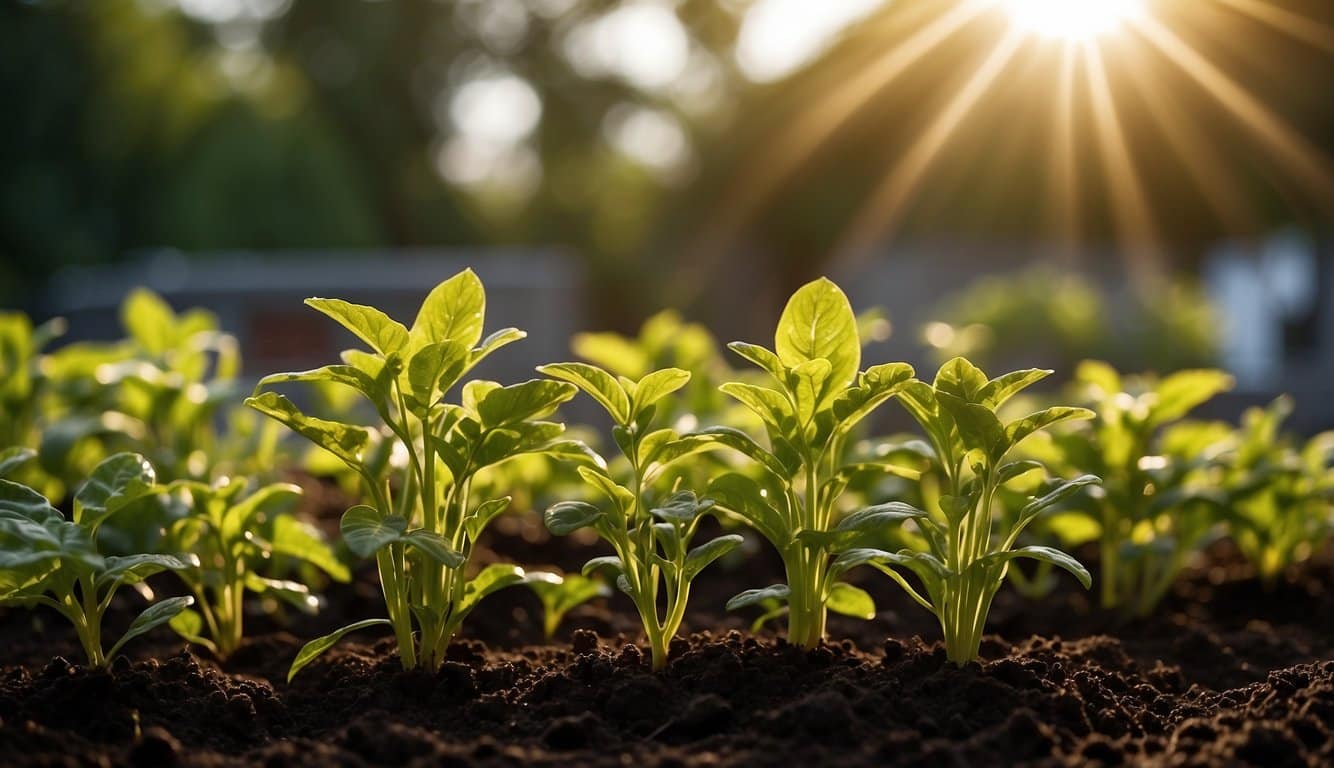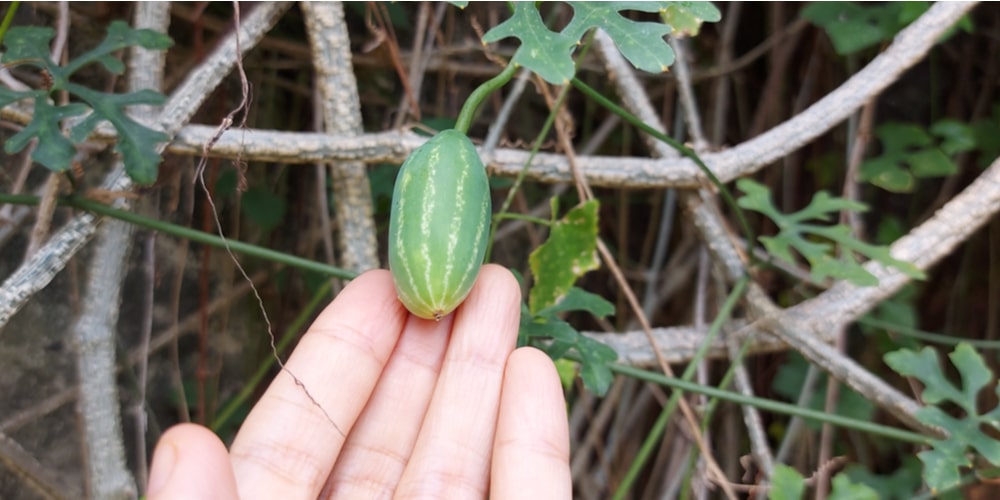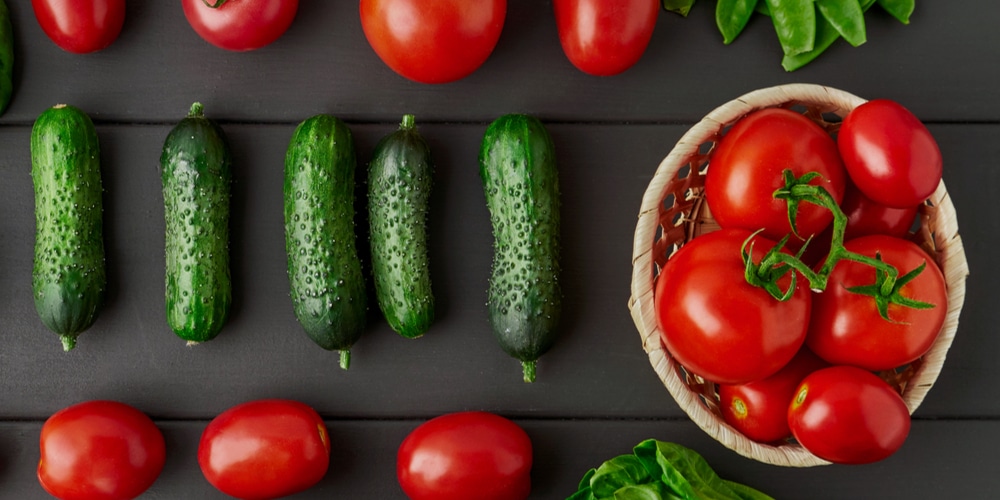Understanding Illinois Climate and Soil Conditions
Illinois’ climate is characterized by distinct seasonal changes which greatly impact your gardening endeavors. You’ll experience warm, humid summers and cold, sometimes snowy, winters. The state receives an average annual precipitation of about 36 inches, with rainfall occurring throughout the year.
Seasonal Variation:
- Spring: Variable, with late frosts possible
- Summer: Warm and humid
- Fall: Typically mild, cooling towards winter
- Winter: Cold and snowy
The growing season varies across the state, influenced by local conditions and elevation. Generally, it extends from late April to October, but frost dates are critical.
Soil Quality and Preparation:
Illinois soil ranges from rich, fertile soils in the central plains to more challenging compositions in other areas.
- Before planting, test your soil to understand its content and pH.
- Soil Composition: Typically loamy, which is ideal for many plants
- pH range: Most garden vegetables prefer a pH of 6.0 to 7.0
Incorporating organic matter such as compost can significantly enhance soil health and structure, providing better moisture retention and nutrient availability.
Key Steps:
- Soil Testing: Conduct before planting to tailor amending strategies
- Composting: Adds nutrients; aim for about 1/3 of your soil mix
- Mulching: Protects against extremes of moisture and temperature
Each planting zone in Illinois offers different opportunities and challenges. The southern regions tend to be warmer, extending the growing season.
Plant Hardiness Zones in Illinois:
- Northern Illinois: Zones 5a to 5b
- Central Illinois: Zone 6a
- Southern Illinois: Zones 6b to 7a
It’s important to select plants suited for your zone to maximize the chances of a thriving, productive garden.
Selecting the Right Organic Crops
When planning your organic garden in Illinois, it’s crucial to select crops that thrive in the state’s climate and to pair them with compatible partners to maximize yield and health.
Seasonal Planting Guide
Cool-Season Crops:
- Spring: Begin with cool-season vegetables such as lettuce, spinach, peas, and radishes as soon as the frost has passed.
- Fall: These can also be replanted in late summer for a fall harvest.
Warm-Season Crops:
- Summer: Wait until the danger of frost is over to plant warm-season crops like tomatoes, cucumbers, peppers, and beans.
| Season | Vegetables to Plant |
|---|---|
| Spring | Lettuce, Spinach, Peas, Radishes |
| Summer | Tomatoes, Cucumber, Peppers, Beans |
| Fall | Broccoli, Cabbage, Carrots, Kale |
Compatible Plant Pairings
Tomatoes: Partner with basil or marigolds to repel pests.
Cucumbers: Benefit from being near radishes, which can deter cucumber beetles.
Carrots: Plant with onions to help repel carrot flies.
Use companion planting to your advantage to naturally repel pests and diseases, and to enhance the flavor of your vegetables. Here are some ideal pairings:
- Tomatoes with Basil
- Cucumber with Radish
- Carrots with Onions
- Lettuce with Mint+
Remember to rotate your crops annually to prevent soil depletion and reduce pests and diseases.
Implementing Sustainable Gardening Practices
In Illinois, successful organic gardening is deeply rooted in sustainable practices. The key to a thriving garden lies in nurturing the soil life and managing pests without harmful chemicals.
Composting Essentials
To build soil fertility, start your own compost pile. It’s simple:
- Combine green waste (kitchen scraps, lawn clippings) with brown waste (dry leaves, straw).
- Maintain moisture to the consistency of a wrung-out sponge.
- Turn the pile every few weeks to aerate it, which speeds up the decomposition process.
Using finished compost invigorates your garden soil, adding essential nutrients and beneficial microorganisms.
Natural Pest Management
Protect your garden from pests by:
- Encouraging beneficial insects like ladybugs and lacewings that devour common garden pests.
- Planting strategically to deter pests: marigolds repel nematodes, and basil can ward off thrips.
Always identify pests accurately before choosing a management strategy to ensure you’re addressing the actual problem without inadvertently harming beneficial organisms.
Irrigation Techniques for Illinois Gardens
When it comes to irrigating your Illinois garden, efficiency and conservation are key. You need to ensure that each drop counts, especially during the dry summer months. Here are some techniques to make the most of your watering.
1. Time It Right: Water your garden either early in the morning or late in the evening. This reduces water loss due to evaporation.
2. Know Your Garden’s Needs: Different plants require different amounts of water. Make sure you tailor your watering schedule accordingly.
3. Measure Water Use:
- Place a rain gauge in your garden to measure exactly how much water your garden is receiving from rainfall.
- Use a bucket to measure output from your hose or sprinkler — a 100-square-foot area needs about 62 gallons for an inch of water.
4. Choose the Right Tools:
- Soaker Hoses: Ideal for direct, root-level watering with minimal waste.
- Drip Irrigation Systems: Provide slow, steady watering and can save up to 50% of water usage compared to sprinklers.
5. Mulching: Mulch keeps the soil moist for longer, reducing water needs. Apply an organic mulch layer around your plants.
6. Water Quality: Ensure the water you are using is free of debris and harmful minerals. Using filtered water can prevent clogs in your irrigation system and avoid harm to plants.
7. Monitor Soil Moisture: Get a soil moisture meter to understand when your garden actually needs watering. Over-watering can be as harmful as under-watering.
Harvesting and Post-Harvest Handling
When you engage in organic gardening in Illinois, timing the harvest is crucial to maximize both the yield and quality of your produce. Harvest in the cool hours of the morning to reduce stress on the plants and to help preserve the produce’s shelf life.
- Monitor Maturity: Understanding the signs of peak maturity for each vegetable ensures you’re harvesting at the optimum time for flavor and nutrition.
- Use the Right Tools: Sharp scissors or pruners can make clean cuts that protect your plants from damage.
Once your organic produce is harvested, post-harvest handling becomes the next important step. This involves being mindful to not bruise the produce, ensuring a quick and gentle transfer from garden to storage.
Post-Harvest Handling Checklist:
- Clean Gently: Brush off any soil or debris. If washing is necessary, use cold water and dry promptly to prevent fungal growth.
- Store Properly: Different vegetables have different storage requirements. Use breathable containers and store at appropriate temperatures.
| Vegetable Type | Ideal Storage Condition | Temperature |
|---|---|---|
| Root Vegetables | Humid and Dark | 32-40°F |
| Leafy Greens | Moist and Cool | 32-36°F |
| Tomatoes | At room temperature | 55-70°F |
Frequently Asked Questions
Organic gardening in Illinois requires understanding the local environment and adopting practices that support sustainable growth without synthetic aids.
What are the essential steps to start an organic garden in Illinois?
To start an organic garden in Illinois, select a suitable site with ample sunlight and good drainage.
Test and amend your soil as needed using organic materials to ensure a fertile, balanced growing medium.
Choose region-appropriate, disease-resistant organic seeds or seedlings.
What are the key considerations for maintaining soil health in organic gardening?
Maintaining soil health involves regular amendments with organic matter, such as compost, to improve soil structure and fertility.
Mulching helps retain moisture, suppress weeds, and regulate soil temperature.
Regular soil testing can guide your organic amendments to maintain optimal pH and nutrient levels.
How can one control pests naturally in an Illinois organic garden?
Natural pest control methods include introducing beneficial insects, like ladybugs and lacewings, that prey on harmful pests.
Using physical barriers such as row covers can protect plants.
Planting pest-deterrent species and practicing crop rotation also contribute to reducing pest issues.
What are the best organic fertilizers to use in Illinois vegetable gardens?
The best organic fertilizers for Illinois vegetable gardens include well-aged manure, compost, fish emulsion, and seaweed extract.
These fertilizers provide a balanced range of nutrients while also improving soil structure and microbial activity.
What specific challenges do gardeners face when growing organic produce in Illinois’s climate?
Gardeners in Illinois may face challenges like delayed spring warmth, humid summers that can foster fungal diseases, and variable winter conditions.
Selecting plants suited for the zone and timing planting to avoid frost are vital in mitigating climate-related issues.
How does one ensure crop rotation in an Illinois organic garden?
Ensure crop rotation by changing the types of crops planted in a particular area each season or year. This practice helps prevent soil depletion, reduces pest and disease carryover, and can improve soil structure and fertility over time.
Map out your garden and plan rotations in advance.


